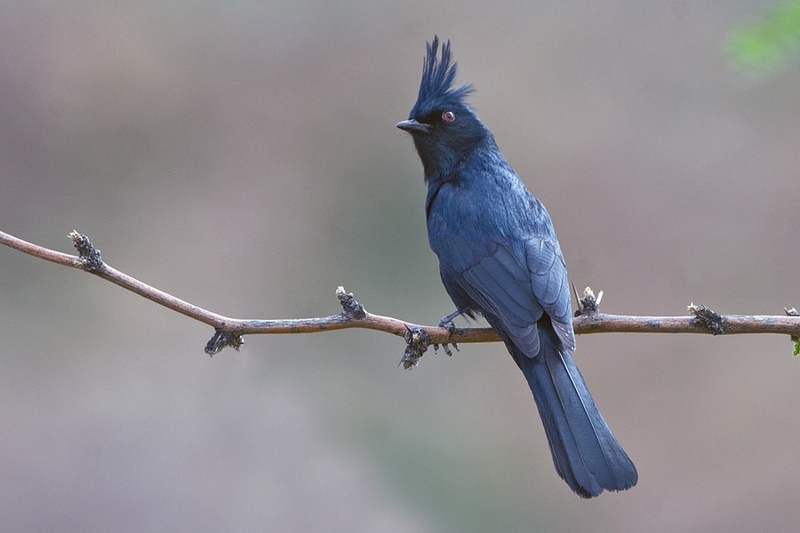Phainopepla (Phainopepla nitens) - Wiki Phainopepla
From Wikipedia, the free encyclopedia
Order: Passeriformes
Family: Ptilogonatidae
[Photo] Phainopepla (Phainopepla nitens) male, Madera Canyon, Arizona. Date: April 2007. Released to public domain. Source: www.naturespicsonline.com/
The Phainopepla (Phainopepla nitens) is the most northerly representative of the mainly tropical Central American family Ptilogonatidae, the silky flycatchers.
Physical description
The Phainopepla is a striking bird, 16-20 cm long with a noticeable crest and a long tail; it is slender, and has an upright posture when it perches. Its bill is short and slender. The male is glossy black, and has a white wing patch that is visible when it flies; the female is plain gray and has a lighter gray wing patch. Both sexes have red eyes, but these are more noticeable in the female than the male.
Range and habitat
The Phainopepla ranges as far north as central California with the San Joaquin Valley and southern Utah, and south to central Mexico, the interior Mexican Plateau region; the southern edge of the plateau, the transverse mountains is its non-breeding home. It is found in hot areas, including desert oases, and is readily seen in the deserts of Arizona and southern California.
Diet
Its chief food is the berries of the Desert Mistletoe (Phoradendron californicum), but since these are only available seasonally in the northern parts of its range, it also eats the berries of other trees such as juniper and elderberry, and insects, hawking for them in flight like a flycatcher. It is an important vector for the mistletoe seeds. When there is enough mistletoe berries they will often congregate in the hundreds.
Reproduction
It nests in the spring. The eggs are dray or pink and speckled, and the incubation, done by both the male and female, takes fifteen days. The children will be reared by the parents for up to nineteen more days.
Interesting habits
Phainopeplas have been found to imitate the calls of twelve other species, such as the Red-tailed Hawk (Buteo lineatus), and the Northern Flicker (Colaptes auratus).
http://en.wikipedia.org/wiki/Phainopepla
| The text in this page is based on the copyrighted Wikipedia article shown in above URL. It is used under the GNU Free Documentation License. You may redistribute it, verbatim or modified, providing that you comply with the terms of the GFDL. |
